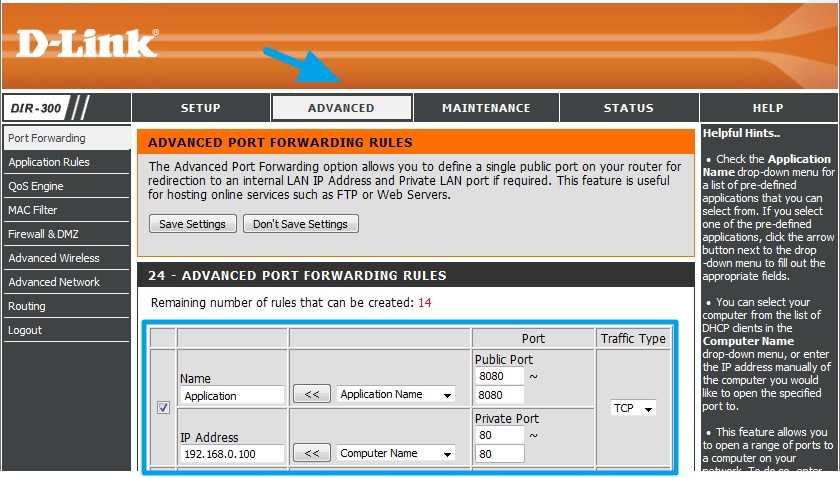The NAT service provides transfer of data sent to the router from the external network to LAN. If rules of data transfer are not set up, commands will not be sent anywhere but your router.
NAT (Network Address Translation) - the service for translation of internal network IP-addresses to IP- addresses of the external network. Before you start to set up NAT, give the equipment you use static local IP-addresses
The principle of forwarding data from the external network to the internal one:
- a remote device sends a command to the router address in the Internet and the "external" port of the equipment specified in the table of data forwarding
- the router forwards the command to the device in the local network specified in the table of data forwarding
- the command is executed by the device
The number of forwarding "rules" on the router has to be set up based on what devices of your network have to receive data or commands from the Internet.
Using the example of the D-Link router, let us set up one forwarding rule (every network device needs its own rule):
- "IP Address" - the local IP-address of the device on which you want to send commands from the Internet
- "Public Port" - the port where you need to send the command from the Internet so it would come to the device
- "Private Port" - the real hardware port that receives commands (it can be different from "Public Port")
- "Traffic Type" - the allowed protocol for connection between the sender and receiver of commands (TCP or UDP)


